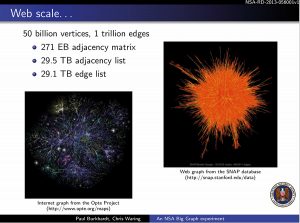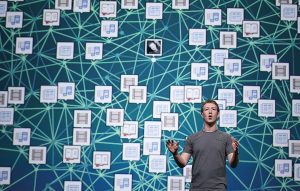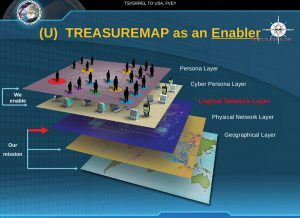Pandemic Media: On the Governmediality of Corona Apps
This article investigates the debate and implementation of corona tracing apps in Europe as an example of a new form governmentality. Here the media of governing become the problem to be governed and subsequently this formation can be called governmediality. With corona apps the role of social graphs became a flashpoint for the emergence of such a governmediality. Based on a brief introduction on the history and context of social graphs, the article shows how coders, politicians, medical professionals, and hacktivists debated the effects of social graphs on individual liberties as well as on pandemic management.
The intellectual game of varying Carl Schmitt’s notion of “sovereign is he who decides upon the state of exception” whenever a crisis occurs reached new heights during the coronavirus pandemic in 2020. Most prominently Giorgio Agamben touted in this vein, framing the crisis triggered by the spread of the SARS-COVID-19 virus as the final revelation of the true core of modern statehood (Agamben 2020). What lies behind the liberal and democratic façade are not only the post-democratic procedures of faked deliberation and technocratic decision-making but also an unfettered desire to reign in the lives of people. This includes altering their freedom of movement, requiring masks, triaging access to health care, and ultimately digitally surveilling whole populations and every individual at once: a digitally enabled normalization of a permanent state of exception. Statehood in the twenty-first century, so the underlying tenor of these debates, was awaiting such a moment to fully deploy its digitally advanced media of oppression.[1]
The development of corona tracing apps in Europe between roughly March 2020 and mid-June 2020 paints a different picture. Launched by a consortium calling itself DP3-T standing for Decentralized Privacy Preserving Proximity Tracing, the resulting smartphone apps were developed via a coordinated effort of an international group of computer scientists, epidemiologists, epidemic-modelers, virologists, and lawyers. The apps promised to facilitate the mapping and notification of the social contacts of infected persons in epidemic situations. With the coronavirus crisis, manual contact tracing had emerged as one of the most important tools to manage the course of the pandemic. By March 2020, smartphone-based tracing apps using Bluetooth standards for proximity sensing came under consideration to accelerate the laborious process of manual contact tracing. Given sufficient acceptance and adoption within a given population, such software applications promised faster response options to emerging contact chains and dynamic, localized management of lockdowns and similar measures.
With their launch in mid-June 2020 the contact tracing apps were lauded as prime examples of how societies should govern their digital re-mediation. Surprisingly this praise was offered by actors typically skeptical about any government IT projects: high profile hacker groups like the German Chaos Computer Club, data protection officials, privacy advocates, and digital activists.
This praise was partially based on the use of open source developing practices, making the codebase of the apps available to public scrutiny via GitHub. For the Bluetooth stack[2] of the tracing apps the two dominant manufactures of smartphone operating systems Apple and Google participated in the development, openly providing APIs[3] to enable access at the level of the operating system, contributing code and privacy consultancy. The code repository GitHub[4] was employed not only to publish code and protocols but to also invite discussions on the social and cultural dimensions of the application.
A practice was thus established around the corona tracing apps that Christopher Kelty (2008: 27f) has called recursive publics. Based on research in open source development communities, Kelty described recursive publics as contexts that simultaneously deliberate and build the tools that allow for their own deliberation. Such a dynamic was evident with the corona tracing apps too. Using GitHub as well as classical forms of publications in newspapers and journals, a recursive public for building a privacy preserving digital contract tracing emerged. In this process the corona tracing apps became a medium of liberalism. Not only were the algorithms, data structures, and protocols of the tracing apps scrutinized in their effects on liberal values, but the question of how a digital liberalism could be implemented was raised. The pandemic was understood as a challenge of liberalism, and the techno-orientalist (Tai 2020) imaginations of the Chinese, Taiwanese, and Korean approaches to tracking and tracing were mobilized as negative examples. In opposition to these mostly imagined Asian approaches, the European tracing app was to preserve individual privacy and not provide any means for surveillance. The posture of the European tracing apps thus both included an international signal as well as messages to the European public. The latter was addressed as subjects of digital governing that they could self-govern by means of the openness of codebase and discussion.
Members of the DP-3T consortium highlighted the necessity to prevent the emergence of social graphs within the data processing elements of the corona app stack. Graphs are mathematical structures describing linkages between entities called nodes. Despite the diagrammatic connotations of the term graph, these mathematical entities are not primarily visual media. Nonetheless visualizations of graphs are common and, for example, part of the visual branding of Facebook events. Here the stage backgrounds often show networks of nodes and edges. But when such stylized graphs are shown or graph datasets are visualized with tools like Gephi,[5] the use-value is comparably low. Visualizations are only viable for datasets with a relatively small number of entities. The function of these pictures is to depict complexity while large graphs, like Google’s search graph with a trillion nodes and edges, escape their visualization.

[Fig. 1] NSA Big Graph Experiment (Source: Technical Report NSA-RD-2013-056002v1)
The term social graph used by the DP-3T consortium was originally coined by Mark Zuckerberg in 2008. In the case of Facebook the nodes are individual people, their friendships the edges. In Zuckerberg’s apt notion of the social graph it is evident that Facebook has nearly managed to monopolize the mathematical representation of all digitally addressable individuals worldwide.

[Fig. 2] Zuckerberg Social Graph (Source: Justin Sullivan/Getty Images)
As the revelations by Edward Snowden as well as material from the War on Terror shows (Burkhard/Waring 2013, Burkhard 2014, Engemann 2016a/b, 2019, 2020, Gellmann 2020), acquiring and maintaining a social graph is a core element of the NSA’s approach to surveillance. At the same time platform companies like Google, Amazon, and Uber also rely on acquiring and monopolizing graphs of specific markets: search, consumption, mobility (Valdes 2021, Engemann 2016b, 2020, Seemann forthcoming 2021).
Without openly discussing these dimensions it is apparent that within the DP-3T consortium and a larger community of computer science informed civil society actors it was a shared view that allowing nation states to appropriate social graphs via corona tracing pps would be detrimental to the goal of preserving liberal values within this infrastructure.
In decentralized system where risk is processed on device locally, “this comes with the important benefit that the server cannot learn the social graph, which is data that can easily be repurposed and misused in ways that individuals would not reasonably expect and may not wish.” (DP-3T, 4, highlighted in the original C.E.)[6]
This point is stressed further in the accompanying Data Protection and Security Paper of the DP-3T, published in May 2020: “No entity can observe or keep record of a global view of the social graph of a population, in anonymized form or otherwise.” (DP-3T, 3)
In a joint statement of researchers associated with the DP-3T project, the dangers of such graphs are further highlighted: “With access to the social graph, a bad actor (state, private sector, or hacker) could spy on citizens’ real-world activities. Some countries are seeking to build systems which could enable them to access and process this social graph.” (Veale et al 2020, 2).
In centralized approaches, the tracing data collected by the smartphones could be interlinked and a graph of the contacts between devices would emerge. [7] Due to the anonymous nature of the tracing data this graph itself would not allow surveillance of individuals. But since interlinking the graph with other data is trivial, the existence of such a graph would pose a significant privacy threat. With centralized data storage and processing, corona tracing apps thus would have become a means of graph appropriations (Engemann 2014; 2016 a/b; 2019; 2020, Seemann 2021, see also Chun 2020), allowing for the generation of a dynamic social map of the tracing population.

[Fig. 3] contact tracing graph visualization in Singapore (Source: https://co.vid19.sg)
Initially favored by the German and French governments (see PEPP-PT 2020), centralized approaches sparked criticism not only by the DP-3T consortium but by the wider public. Germany eventually changed their stance to a decentralized app, which delayed the rollout by six weeks. France deployed a centralized version in mid-May. By mid-June the centralized approach favored in Great Britain had been dropped and the decentralized model was adopted for the NHS app.
From Governmentality to Governmediality
The development of the corona tracing apps has given rise to a peculiar state of exception: the exceptional situation that those who are governed reject being graphed out. Given the prevalence of graphing for platform economies and in geopolitics since 9/11, such rejection could be called naïve. But perhaps the corona crisis is a moment when contemporary societies began in earnest to muster and investigate the media of their governing. By this I mean the media that both generate the data, addresses, and orders as well as allow societies to store, transmit and process these very data, addresses and orders to govern themselves. Despite romantic inclinations desiring this, unmediated societies have never existed.[8] The current situation of the ongoing transition to digital media is a re-mediation. The scope of this re-mediation is no less than total: an outside of the digital mediality nowhere in sight. Quite the contrary: we are witnessing how every aspect of life gets re-mediated as smart environments (Sprenger 2019), made addressable via wearables (Nosthoff & Maschewski 2019), and how ever new apps are proposing to digitize the as yet undigitized. Simultaneously platform infrastructures allow for ever finer granularity in processing and interlinking the resulting data.
Graphs perhaps encapsulate this totalizing element of digital media: they are datastructures of endless aggregation, never complete and always open to incorporating and interlinking more and new data. This totalizing moment is furthermore inherent to the centrality measures that process the relative position of every node to every other node[9] and power the graph-based identification techniques employed in the war on terror, in online advertisement, as well as in epidemiological interventions.

[Fig. 4] Slide from the Snowden Archive TREASUREMAP Presentation (Source: https://www.spiegel.de/media/6442ce11-0001-0014-0000-000000034757/media-34757.pdf)
What raised its head in Europe is perhaps not the state of exception as Agamben envisioned it. Rather, it is a further solidification of a new form of governing in which what Michel Foucault had described as governmentality (Foucault 2004) becomes a governmediality. The emergence of a regime where individuals, hackers, experts, NGOs, private firms, and governments generate recursive publics that allow them to study, deliberate, and govern the mediality of their own conduct and of the conduct of conducts. The media of society, more precisely the media which establish and enable the sociality of a given population, are foregrounded and rendered into problems of governing. A process which is inseparable from investigating the media of self-governing of establishing individuality, privacy, and self-conduct under digital conditions. In the emerging liberal governmediality of Europe, enabling citizens to question digital media as tools of both enabling as well as threating liberal values constitutes a core dynamic. The corona tracing apps exemplify this development. In the future, similar developments in the fields of digital identity management, eHealth, eGovernment, but also energy conversation and food safety can be expected. None of these developments will rule out a state of exception in Agamben’s sense, but the focus of critical inquiry into digital statehood could perhaps learn more by focusing on the permanent mobilization of critical faculties enabling liberal implementations of digital media.
References
Agamben, Giorgio. 2020. “The Intervention of an Epidemic.” European Journal of Psychanalysis, February 26. http://www.journal-psychoanalysis.eu/coronavirus-and-philosophers/. Accessed June 22, 2020.
Blue Trace. 2020. “BlueTrace Manifesto.” Team TraceTogether, tracetogether.zendesk.com. http://tracetogether.zendesk.com/hc/en-sg/articles/360044883814-BlueTrace-Manifesto. Accessed June 22, 2020.
Burkhardt, Paul. “Big Graphs.” The Next Wave, vol. 20, no. 4, 2014, 11–19.
Burkhardt, Paul, and Chris Waring. 2013. An NSA Big-Graph Experiment. http://www.pdl.cmu.edu/SDI/2013/slides/big_graph_nsa_rd_2013_56002v1.pdf.
Christaens, Tim. 2020. Must Society Be Defended from Agamben? https://criticallegalthinking.com/2020/03/26/must-society-be-defended-from-agamben/.
Chun, Wendy Hui Kyong. “Net-Munity, or The Space between Us … Will Open the Future.” In the Moment, 20 May 2020. critinq.wordpress.com, https://critinq.wordpress.com/2020/05/20/net-munity-or-the-space-between-us-will-open-the-future/. Accessed June 24, 2020.
DP-3T. 2020. DP-3T/Documents. DP^3T, GitHub, https://github.com/DP-3T/documents. Accessed June 22, 2020.
Engemann, Christoph. 2020 “In Gesellschaft der Graphen. Warum der Datenschutz mehr als das Individuum berücksichtigen muss.” Frankfurter Allgemeine Sonntagszeitung, April 12.
–––. 2019. IGF 2019 – Day 0 – Raum I – 24 – Otherwise Salon: Graphs & Sovereignty. YouTube, https://www.youtube.com/watch?v=AizNWt1a2Ls&feature=emb_logo.
–––. 2016a. “Digitale Identität Nach Snowden. Grundordnungen zwischen Deklarativer und Relationaler Identität.” In Der Digitale Bürger und seine Identität, ed. Gerrit Hornung and Christoph Engemann, 23–64. Nomos Verlag.
–––. 2016b. “Human Terrain System – Social Networks and the Media of Military Anthropology.” In Social Media-New Masses, ed. Inge Baxmann et al., University of Chicago Press.
Engemann, Christoph, and Boris Traue. 2006. “Governmediality of the Life Course.” Governmediality.Net, governmediality.net. Accessed June 19, 2020.
Foucault, Michel. 2004. Geschichte Der Gouvernementalität I: Sicherheit, Territorium, Bevölkerung. Vorlesung Am Collège de France; 1978 – 1979. Suhrkamp.
Gellman, Barton. 2020. “Inside the NSA’s Secret Tool for Mapping Your Social Network | WIRED.” WIRED, May 24, https://www.wired.com/story/inside-the-nsas-secret-tool-for-mapping-your-social-network/. Accessed June 25, 2020.
Kelty, Christopher. 2008. Two Bits: The Cultural Significance of Free Software and the Internet. Duke University Press.
Nancy, Jean-Luc. 2020. “Communovirus” (English and French Text) | European Journal of Psychoanalysis. http://www.journal-psychoanalysis.eu/communovirus-english-and-french-text/. Accessed June 19, 2020.
Nosthoff, Anna-Verena, and Felix Maschewski. 2019. Die Gesellschaft der Wearables: Digitale Verführung und Soziale Kontrolle. Bielefeld: Transcript Verlag
PEPP-PT. 2020. Data Protection and Information Security Architecture Illustrated on German Implementation, April 20.
Rieder, Bernhard. 2020. Engines of Order A Mechanology of Algorithmic Techniques. Amsterdam: Amsterdam University Press, 2020.
–––. “PEPP-PT.” PEPP-PT, 2020. https://www.pepp-pt.org. Accessed June 22, 2020.
Sarasin, Philipp. 2020. “Mit Foucault die Pandemie verstehen?” Geschichte der Gegenwart, March 25. https://geschichtedergegenwart.ch/mit-foucault-die-pandemie-verstehen/. Accessed June 23, 2020.
Seemann, Michael. 2021. Die Macht der Plattformen – Politik im Zeitalter der Internetgiganten. Berlin: CH. Links Verlag.
Sotiris, Panagiotis. 2020. “Against Agamben: Is a Democratic Biopolitics Possible?” Critical Legal Thinking, March 14. https://criticallegalthinking.com/2020/03/14/against-agamben-is-a-democratic-biopolitics-possible/. Accessed June 20, 2020.
Sprenger, Florian. 2019. Epistemologien des Umgebens zur Geschichte, Ökologie und Biopolitik künstlicher Environments. Bielefeld: Transcript Verlag.
Tai, Katharin, and Tim Pritlove. 2020. UKW023 Corona: China, Taiwan und Hong-Kong. Accessed 20 June 2020. https://ukw.fm/ukw023-corona-china-taiwan-und-hong-kong
Tönnies, Ferdinand. Gemeinschaft und Gesellschaft. 1880-1935. Ed. Bettina Clausen and Dieter Haselbach. Vol. 2. Berlin: De Gruyter, 2019.
Traue, Boris. 2010. Das Subjekt der Beratung. Zur Soziologie einer Psycho-Technik. Bielefeld: Transcript Verlag.
Valdes, Ray. 2012. “The Competitive Dynamics of the Consumer Web: Five Graphs Deliver a Sustainable Advantage.” Gartner, July 13. https://www.gartner.com/doc/2081316/ competitive-dynamics-consumer-web-graphs. Accessed June 21, 2020.
Veale, Michael, et al. 2020. Joint Statement on Contact Tracing: Date 19th April 2020. https://giuper.github.io/jointstatement.pdf
Notes
[1] The website of the European Journal of Psychoanalysis has collected Agamben’s original article, “The invention of an epidemic,” and the subsequent discussion with contributions by Alain Badiou, Slavoi Zizek, and Jean-Luc Nancy among others. For a critical discussion see also Christiaens 2020, Sotiris 2002, and Sarazin 2020.
[2] Bluetooth stack refers to the vendor specific implementation of the set of protocols defined for the Bluetooth low energy short range communication standard.
[3] API stands for application programming interface and defines how an application interfaces with other applications requesting data from it.
[4] GitHub is a popular online source code repository allowing for distributed development of software. Founded it 2008, GitHub was acquired by Microsoft in 2018. See github.org
[5] Gephi is an open source software package for visualizing, analyzing and exploring graph-data sets. See gephi.org
[6] See also the Blue Trace Manifesto from Singapore (Blue Trace 2020)
[7] See for example the position taken by German-Franko PEPP-PT consortium: PEPP-PT Data Protection and Information Security Architecture Illustrated on German Implementation, 5, 8, and 23.
[8] Society as a modern phenomenon is the translocal and transtemporal interrelatedness of individuals, institutions, and entities enabled and facilitated by and with media. The critique of society often relies on calling for seemingly unmediated forms like face-to-face communication to overcome the indirectness and alienation ascribed to society. See for example the classical dichotomy between society and community as offered by Tönnies (1897/2010).
[9] For an elaborate discussion on the historical and epistemological contexts of centrality measures, see the excellent overview in Bernhard Rieder’s “Engines of Order – A Mechanology of Algorithmic Techniques” (Rieder 2020, 268ff).